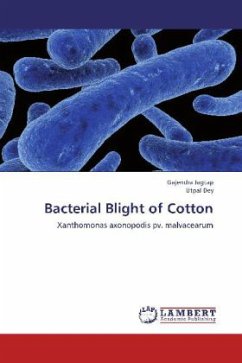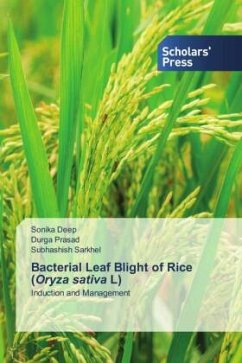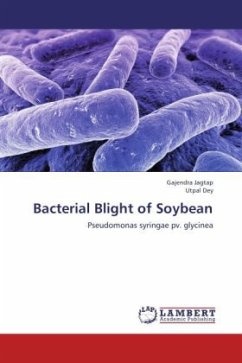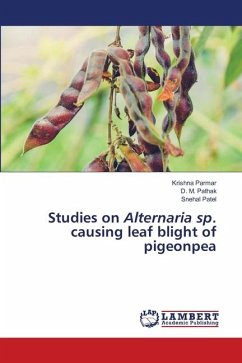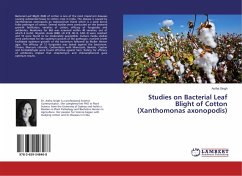
Studies on Bacterial Leaf Blight of Cotton (Xanthomonas axonopodis)
Versandkostenfrei!
Versandfertig in 6-10 Tagen
27,99 €
inkl. MwSt.

PAYBACK Punkte
14 °P sammeln!
Bacterial Leaf Blight (BLB) of cotton is one of the most important diseases causing substantial losses to cotton crop in India. The disease is caused by Xanthomonas axonopodis pv malvacearum (Xam) which is a seed borne foliar pathogen of cotton. Several studies were conducted on the bacterial growth facilitators, varieties of cotton, efficacy of fungicides and antibiotics. Resistance for BLB was screened within 40 varieties, out of which 6 (Lohit, Shyamli, Acala 3080, LD 419, RG 8, CAD 4) were resistant and 10 were found to be moderately susceptible. Culture media studies were performed for th...
Bacterial Leaf Blight (BLB) of cotton is one of the most important diseases causing substantial losses to cotton crop in India. The disease is caused by Xanthomonas axonopodis pv malvacearum (Xam) which is a seed borne foliar pathogen of cotton. Several studies were conducted on the bacterial growth facilitators, varieties of cotton, efficacy of fungicides and antibiotics. Resistance for BLB was screened within 40 varieties, out of which 6 (Lohit, Shyamli, Acala 3080, LD 419, RG 8, CAD 4) were resistant and 10 were found to be moderately susceptible. Culture media studies were performed for the optimum growth of the pathogen, nutrient broth facilitated optimum growth of the bacterium followed by Muller Hinton agar. The efficacy of 12 fungicides was tested against the bacterium. Thiram, Mercuric chloride, Carbendazin with Mancozeb, Bavistin, Captan and Formaldehyde were found effective against Xam. Testing for efficacy of antibiotics implied that streptomycin and chloramphenicol gave optimum results.






